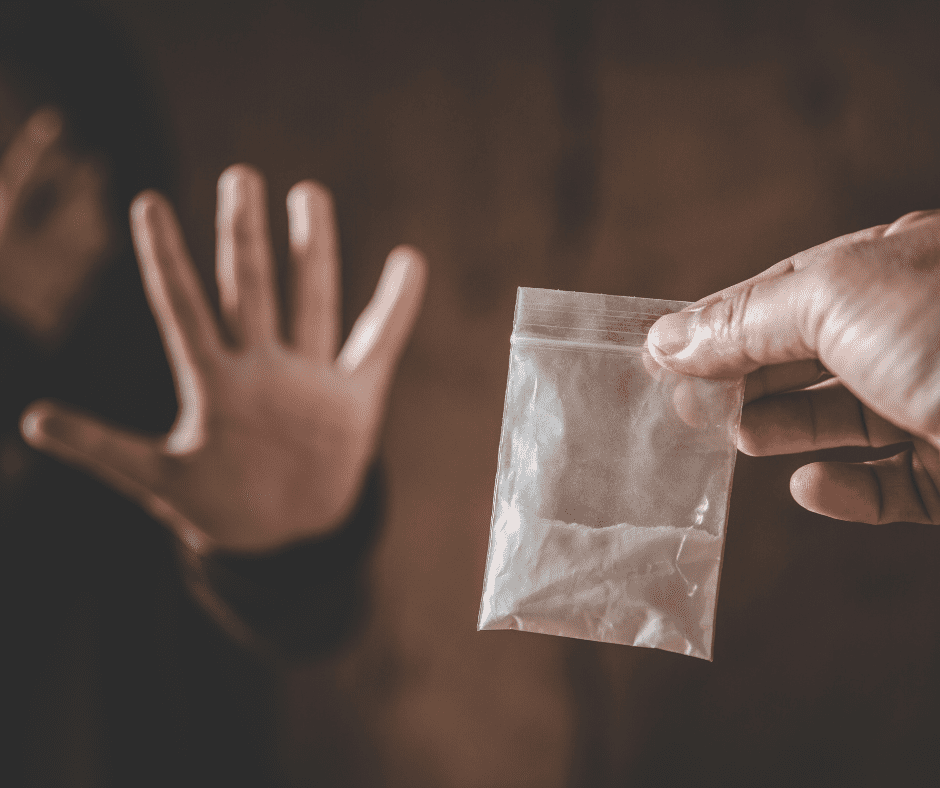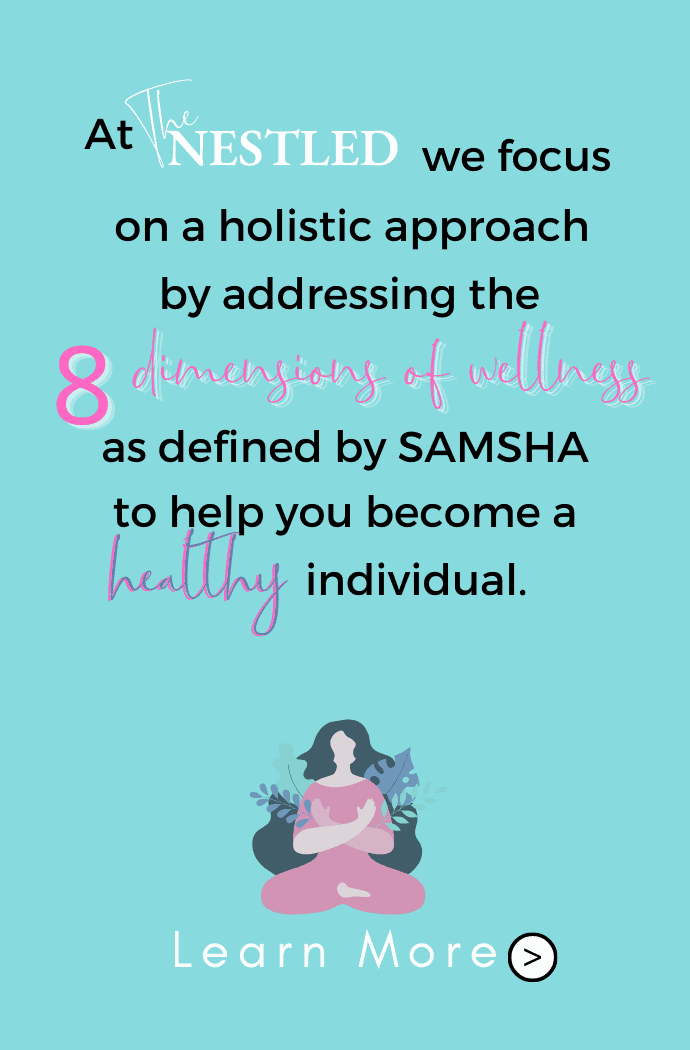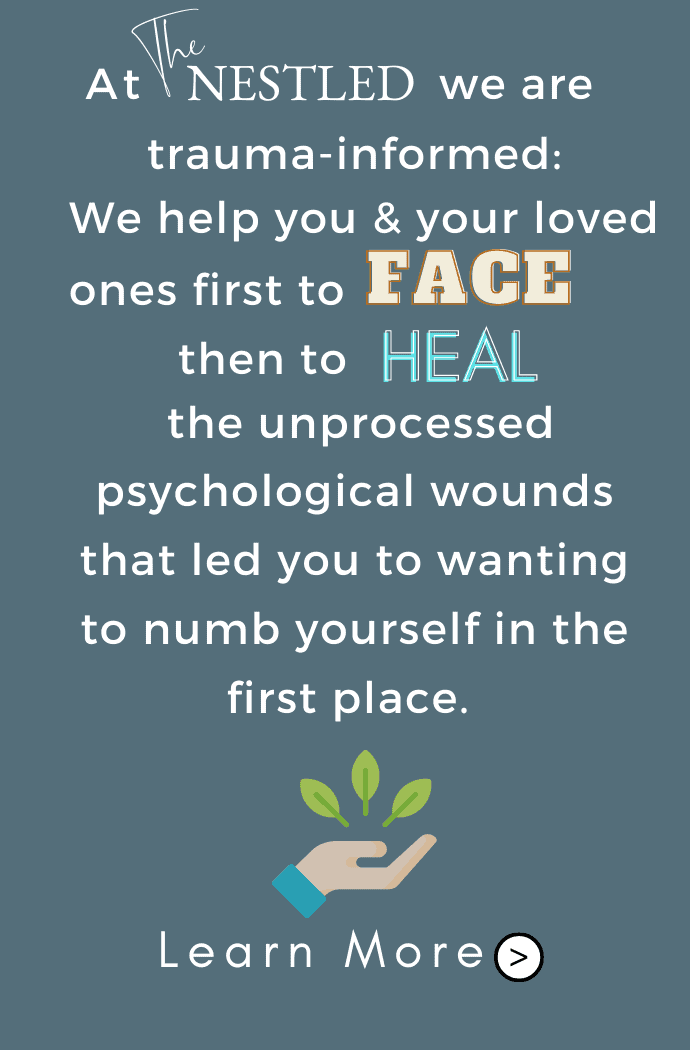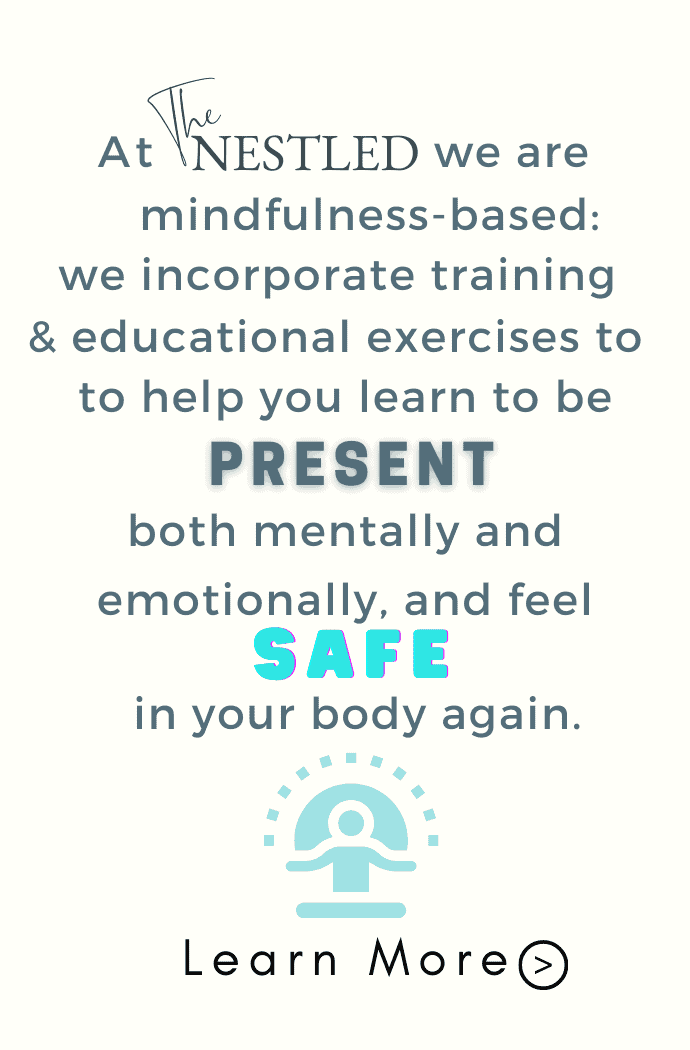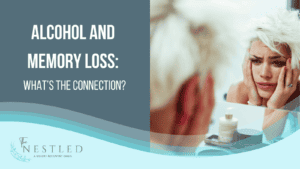Key Takeaway:
- Understanding the stages of substance use disorders can help individuals and their loved ones identify warning signs and take action before addiction takes hold.
- The stages of substance use disorders progress from experimentation to addiction, with each stage characterized by specific warning signs and behaviors.
- Treating substance use disorders often requires a combination of detoxification, behavioral therapy, medication, and support groups, and prevention strategies should focus on education, early intervention, access to treatment, and social support.
Defining Substance Use Disorders
Substance use disorder, including drug and alcohol addiction, is a complex and pervasive issue affecting individuals worldwide. It encompasses a range of problematic behaviors and physical dependence on substances, leading to significant personal, social, and health-related consequences. Understanding the stages of a substance use disorder, specifically related to drug and alcohol addiction, is crucial for effective prevention, intervention, and treatment strategies. In this article, we delve into the progressive stages of drug and alcohol addiction, exploring the key characteristics, warning signs, and implications associated with each stage. By gaining insight into these stages, we can better comprehend the evolving nature of drug and alcohol addiction and work towards fostering healthier communities.
The Stages of Substance Use Disorders: Progression and Warning Signs
The stages of substance use disorder can be categorized into five main phases, each representing a distinct progression in the relationship with substances:
-
Experimentation: This initial stage involves trying a substance out of curiosity or peer influence. It may be sporadic and driven by a desire for new experiences. Experimentation does not necessarily indicate a substance use disorder, but it lays the foundation for potential future issues.
-
Regular Use: In this stage, substance consumption becomes more frequent and predictable. It involves using substances as a means of relaxation, coping with stress, or seeking pleasure. Regular use often coincides with increased tolerance, where larger amounts of the substance are needed to achieve the desired effects.
-
Problematic Use: As substance use intensifies, individuals may experience negative consequences impacting various aspects of their lives. This stage is characterized by impaired control over substance use, an inability to cut back or stop despite adverse effects on physical health, relationships, work, and other important areas.
-
Addiction: At this stage, individuals develop a full-blown addiction, marked by a profound and compulsive craving for the substance. Addiction is accompanied by a loss of control, with substance use taking precedence over other priorities. Tolerance and withdrawal symptoms may manifest, driving the individual to maintain their drug-seeking behaviors.
-
Recovery and Treatment: While not a stage of substance use disorder per se, this phase represents the journey towards regaining control and achieving sobriety. Recovery involves recognizing the problem, seeking professional help, engaging in evidence-based treatments, and developing strategies to prevent relapse. It is a lifelong process that can lead to improved well-being and a substance-free life.
Understanding these stages allows for early identification of substance use problems and targeted interventions tailored to the individual’s specific needs. By recognizing the progression of substance use disorder, we can better support prevention efforts, provide effective treatment, and promote long-term recovery.
Experimentation: Trying Drugs and Alcohol for the First Time
Experimentation: Trying Drugs and Alcohol for the First Time is a stage in the progression of substance use disorders that involves the initial introduction to drug and alcohol consumption. Many young people, sometimes pressured by peers, experiment with drugs and alcohol as they seek new experiences or try to fit in. Others may be curious or have heard positive things about using these substances. Regardless of the reason, Experimentation is often the first step towards addiction.
During Experimentation, individuals may try drugs or alcohol once or twice out of curiosity but then return to their normal lives without any significant consequences. In some cases, however, Experimentation may lead to more frequent use and eventual addiction. Individuals who continue to use drugs or alcohol beyond Experimentation often experience a sense of exhilaration and relaxation that can lead them to crave more.
While trying drugs or alcohol may seem like an exciting adventure at first, it’s essential to understand that experimentation does carry some real risks. For example, there is always the possibility of overdose or negative side effects from mixing different substances. Moreover, engaging in risky behavior while under the influence can lead to serious accidents or legal problems.
If you are considering experimentation with drugs or alcohol, think carefully before taking action. Instead of giving in to peer pressure, consider alternative ways to socialize and have fun that don’t involve substance use. Remember that your health and safety are paramount considerations when trying new things – don’t risk them just for a momentary thrill.
Regular Use: Frequent Consumption of Substances
Regular use refers to the frequent consumption of substances, either drugs or alcohol, in which an individual starts to develop a pattern of regular and repeated usage. Initially, the substance may be used occasionally, but with time it becomes a regular part of daily life. The individual may start consuming the substance for various reasons like anxiety, depression, boredom or simply to experience pleasurable feelings.
The frequent consumption of substances leads to chemical changes in the brain and the body develops a tolerance to the substance. As a result, users need more of the substance to feel its effects – this leads to drug dependence or addiction. Regular users will often begin seeking out these substances more frequently or in larger amounts than before.
Regular use also affects individuals differently; some people can control their consumption while others cannot. This is because genetics plays an essential role in determining whether an individual is prone to addiction or not. Additionally, environmental factors such as home environment and peer influence can also contribute to regular use.
There are different stages in substance use disorders that are characterized by progressive changes in behavior and physical health. One such stage is Regular Use and if left untreated progress into riskier behaviors with greater consequences.
One question begs asking; if regular use leads down a road of dependency towards negative outcomes then what could possibly be worse? Well… let me introduce you to ‘Risky Use: Engaging in Dangerous Behavior while Under The Influence’ where the consequences of substance use can also impact those around you.
Problematic Use: Engaging in Dangerous Behavior while Under the Influence
A dangerous outcome of substance use disorders is the engagement in risky behavior while under the influence. This can include activities such as driving under the influence, unprotected sex, or even criminal behavior.
When a person uses drugs or alcohol, their judgment and decision-making abilities are significantly impaired. They may feel invincible and be more likely to take risks they wouldn’t otherwise. Additionally, some substances can increase aggression or decrease inhibition, making it easier to engage in dangerous behavior.
Risky use can have severe consequences for both the individual and those around them. In addition to legal repercussions, individuals may suffer from injuries, sexually transmitted infections, or other health problems. It can also strain relationships with loved ones or lead to social isolation.
A true example of risky use occurred in 2013 when Justin Bieber was arrested for driving under the influence in Miami Beach. The singer had been drag racing at high speeds and later failed a sobriety test. The incident not only resulted in legal consequences but also brought attention to Bieber’s ongoing struggle with substance abuse.
Dependence: Physiological and Psychological Dependence on Substances
Dependence: Physiological and Psychological Dependence on Substances is a commonly heard term when it comes to substance use disorders. The dependence that individuals develop on these substances is of two types- physiological and psychological.
Physiological dependence occurs when the body becomes accustomed to the presence of a particular substance in the system. As a result, when this substance is withdrawn abruptly, the body experiences physical symptoms like nausea, tremors, seizures or sweating. On the other hand, psychological dependence occurs due to a shift in an individual’s thought process whereby they feel like they cannot function properly without consuming their substance of choice.
Several factors play into how both physiological and psychological dependence on substances work. For instance – the person’s age, gender, weight or genetic disposition can impact their likelihood of developing an addiction. Additionally, using drugs to alleviate mental health conditions like anxiety or depression can also increase one’s risk for dependency as well.
Interestingly enough, not all addictions result in drug or alcohol usage; processes like gambling or sex also qualify under addictions since they too are activities that are used as coping mechanisms for underlying emotional pain.
Pro Tip: Dependency often creeps up gradually- therefore it is important to keep track of one’s consumption patterns over time to avoid any unexpected upsurges that lead to an addiction.
Addiction: Loss of Control and Compulsive Use of Substances
Addiction: Loss of Control and Compulsive Use of Substances is a state where an individual’s dependency on certain substances has reached the point where they feel powerless to control it. It is characterized by a constant urge to use drugs or alcohol despite adverse consequences.
In exploring Addiction: Loss of Control and Compulsive Use of Substances, let us examine its five significant components:
- Habitual or repeated drug use can lead to addiction so that there is a need for greater amounts over time to produce the same effect, known as tolerance.
- Despite recognizing negative consequences, such as health hazards or relationship problems or job loss due to substance abuse, one continues using the substance.
- Behavioral changes due to drug intake affect relationships with friends and family; for instance, being secretive about one’s habit or having an agitation when there is no access to the drug.
- Individuals with addiction usually become preoccupied with acquiring their substance of choice when it is not available.
- Stopping substance use may cause withdrawal symptoms like anxiety, insomnia, depression and in severe cases seizures.
The complexity of Addiction: Loss of Control and Compulsive Use of Substances lies beyond reinforcing effects but also relies on psychological elements such as emotion regulation deficits and compulsivity features. It includes various genetic and environmental factors like trauma at early life stages contributing to developing an addiction.
Recovery and Treatment
Recovery and treatment play a pivotal role in helping individuals break free from the grips of substance use disorder. Recognizing the problem and taking the courageous step towards seeking help are essential components of the recovery journey. Treatment options for substance use disorder encompass a range of approaches, including behavioral therapies, medication-assisted treatments, support groups, and counseling. These interventions aim to address the physical, psychological, and social aspects of addiction, providing individuals with the tools and support they need to overcome cravings, manage withdrawal symptoms, and develop healthier coping mechanisms. Additionally, the importance of support systems cannot be understated, as family, friends, and recovery communities offer invaluable encouragement and understanding during the recovery process. Through ongoing commitment, relapse prevention strategies, and access to comprehensive care, individuals in recovery can experience profound positive transformations, reclaim their lives, and build a foundation for lasting sobriety.
Treating Substance Use Disorders: Options for Recovery
Detoxification: Withdrawal Management in a Safe Environment
Detoxification or “detox” refers to the process of removing toxic substances from the body. In the context of substance use disorders, detoxification specifically means managing withdrawal symptoms in a safe and controlled environment. This is an important first step in treating addiction because withdrawing from certain drugs can be dangerous or even life-threatening.
Detoxification works by gradually reducing the amount of drugs or alcohol in a person’s system while managing withdrawal symptoms. This process may involve medication-assisted treatment (MAT) to ease symptoms like nausea, tremors, or seizures. MAT can also help prevent relapse by reducing cravings and other psychological symptoms.
The goal of detoxification is to help individuals safely manage withdrawal and stabilize their physical health so they can move on to further treatment options. But it’s important to note that detox alone doesn’t address the underlying issues that contribute to addiction, such as trauma or mental health problems.
In some cases, people may attempt to detox on their own at home, but this can be dangerous – especially when withdrawing from certain drugs like benzodiazepines or opioids. Withdrawal from these substances can cause severe physical symptoms and might require medical attention. That’s why professional medical supervision is crucial for safe and effective detoxification.
Now that we’ve talked about how detox works, let’s move on to another important part of addiction treatment: behavioral therapy.
Behavioral Therapy: Changing Thoughts, Emotions, and Behaviors
Behavioral Therapy: Changing Thoughts, Emotions, and Behaviors is an essential part of treating substance use disorders. It focuses on changing negative thoughts and emotions surrounding addiction to promote positive behaviors that lead to recovery.
This type of therapy works by identifying and addressing the root causes of addictive behaviors, such as stress, trauma, or mental health issues. A therapist will work with a patient to develop coping mechanisms and alternative solutions to combat triggers and cravings.
Research has shown that Behavioral Therapy is incredibly effective in reducing drug use, improving mental health outcomes, and enhancing overall quality of life for those struggling with addiction. By addressing negative thought patterns and emotional distress head-on, individuals can build a stronger foundation for long-term sobriety.
Did you know that Cognitive Behavioral Therapy (CBT) is often used in conjunction with other forms of therapy for optimal results? This combination approach has been proven in studies to be more effective than singular approaches.
As patients move through their journey towards recovery, Medication: Reducing Cravings and Withdrawal Symptoms becomes an attractive option. But first, let’s dive into how medication plays a vital role in addiction treatment…
Medication: Reducing Cravings and Withdrawal Symptoms
Medication: Reducing Cravings and Withdrawal Symptoms is a crucial aspect of treating substance use disorders. Medications can be useful in different stages of addiction, ranging from reducing cravings to helping with withdrawal symptoms during detoxification.
In the first point, Medication-Assisted Treatment (MAT) can help reduce drug or alcohol cravings by blocking certain receptors in the brain that trigger these urges. It can also alleviate anxiety and depression associated with addiction. Second, medications like methadone or buprenorphine can manage opioid withdrawal symptoms effectively for individuals recovering from opioid use disorders. Third, Antabuse is a medication used to treat alcoholism by making patients ill if they drink while taking the medication.
Interestingly, some medications previously used for other illnesses have been found to be useful in treating substance use disorders. For example, Naltrexone was initially used to treat opioid addiction but has been found effective in treating alcohol dependence as well.
With so many options available to combat substance abuse and addiction, it’s important to seek the advice of professionals regarding treatment options that are suitable for individual needs.
Support Groups: Peer Support and Accountability
Support groups are vital when it comes to substance use disorder recovery because they provide both peer support and accountability. The power of having a support system made up of people facing similar struggles is invaluable, and the accountability factor keeps individuals on track towards their goals.
Here are six important points to consider regarding Support Groups: Peer Support and Accountability:
- Peer support means receiving encouragement, guidance, and advice from individuals who understand the challenges you’re facing.
- Being accountable to oneself can be difficult; being accountable to a group means stronger motivation to follow through.
- Many support groups use a 12-step program that creates an environment of camaraderie and shared experiences among its members.
- Research shows that people who participate in support groups have better substance use treatment outcomes than those who don’t.
- There are countless types of support groups available, including faith-based programs, wellness-focused meetings, and gender-specific groups.
- Many rehabilitation centers offer access to support groups for ongoing care after treatment.
Peer support involves not just emotional help but practical assistance with issues like transportation or childcare needs so that addicts aren’t derailed from attending meetings or therapy sessions. It also helps break down the feeling of isolation many experience when dealing with substance abuse disorders on their own. During group meetings, participants learn about new strategies for coping mechanisms and develop new tools for handling triggers that contribute to substance use.
A prime example of how powerful these kinds of connections can be is Alcoholics Anonymous (AA), founded in 1935 by Bill Wilson and Dr Bob Smith, two alcoholics in Akron, Ohio – is now active in more than 170 countries worldwide with over two million members worldwide. At AA meetings globally one can witness firsthand how people come together to share stories without fear or judgement because they know everyone else is there for the same thing – achieving sobriety one day at a time.
Preventing Substance Use Disorders
Education and Awareness: Understanding the Risks and Consequences
Understanding the risks and consequences of substance use is essential for preventing substance use disorders. Education and awareness can be an effective strategy to create a healthy lifestyle and prevent addiction.
Education and awareness work by providing knowledge about the effects of substance use on physical and mental health, relationships, work-life, and society. When people understand the risks, the reasons to avoid or stop using substances become more apparent. They are more likely to make informed decisions about their behaviors.
Additionally, education and awareness can reduce stigma around substance use disorders. It can encourage people to seek help if needed without feeling ashamed or embarrassed. Furthermore, it can facilitate communication between parents, teachers, healthcare providers, peers, and individuals struggling with addiction.
According to a study published in the Journal of Substance Abuse Treatment, school-based interventions that focused on educating students about alcohol and drug abuse had a significant impact on reducing substance use among adolescents.
Did you know that only 24% of people who need treatment for substance use disorders receive specialized care? It highlights the need for education and awareness at all levels of society.
“Prevention is better than cure,” but addressing substance use issues at an early stage can save lives. In my next section segment ‘Are you or someone you know struggling with Addiction? Early Intervention Can Save Lives.’ let’s learn how early intervention strategies like screening, brief intervention, referrals to treatment (SBIRT), mindfulness techniques, cognitive-behavioral therapies (CBT), motivational interviewing(MI), contingency management(CM) can benefit individuals dealing with addiction.
Early Intervention: Addressing Substance Use Issues at an Early Stage
Intervening early in addressing substance use issues has proven to have a positive impact on reducing the risk of individuals developing substance use disorders. It involves identifying the signs and risk factors of drug or alcohol use at an early stage, and implementing measures to prevent them from becoming habitual.
Early intervention works by providing education and support to individuals before they develop an addiction. It raises awareness about the harms of substance abuse and helps individuals make informed decisions about their choice of using drugs or alcohol. By intervening early, it becomes easier for individuals to overcome peer pressure and withdrawal symptoms. When family members or healthcare providers intervene, they can help create a supportive environment that empowers the individual to seek treatment if needed.
One valuable aspect of early intervention is its ability to recognize risky behavior patterns that may not be immediately visible to others. Often, young adults experiment with drugs or alcohol as a coping mechanism during stressful life circumstances, which can escalate into addiction. Early intervention provides an opportunity to address these underlying issues and offer alternative coping mechanisms.
Access to Treatment: Overcoming Barriers to Recovery
Access to Treatment: Overcoming Barriers to Recovery is a crucial component of preventing substance use disorders. It refers to the accessibility and availability of evidence-based treatments for individuals struggling with addiction. This includes both behavioral therapies and medication-assisted treatment options.
Access to treatment is important because it can help individuals overcome the barriers that prevent them from seeking help. These barriers can include stigma, lack of insurance coverage, limited resources in rural or underserved areas, and personal beliefs about addiction and recovery.
One of the ways access to treatment works is by providing education and awareness about addiction and recovery. When individuals understand that substance use disorders are a chronic condition that require long-term management, they are more likely to seek out professional help. Additionally, connecting individuals with support groups or counseling services can play an important role in overcoming stigma and creating a sense of community.
Research has also shown that medication-assisted treatment (MAT) for opioid addiction is highly effective at reducing substance use and improving outcomes like employment and social functioning. Access to MAT can be limited by regulations, healthcare provider bias, or insufficient funding for comprehensive care programs.
Social Support: Building Positive Relationships and Community Support.
The role of social support in preventing substance use disorders is a topic that needs to be discussed at length. Building positive relationships with individuals who provide emotional, informational, and instrumental assistance can play a significant role in reducing the risk of addiction. It not only provides one with reassurance but also creates a sense of community support.
Social Support: Building Positive Relationships and Community Support works by providing individuals with meaningful relationships that promote healthy behaviors. People who are isolated or lack social support are more likely to experiment with drugs as it can ease their anxiety and provide comfort. In contrast, people with strong social networks have better-coping mechanisms to deal with stressors in life; thereby dependence on substances decreases. Thus, building positive relationships is essential for preventing substance abuse.
Types of Substances: Common Categories and Their Effects
Types of substances refer to different categories of drugs that people use. Substance abuse is a significant public health problem in the world today, and it affects people from all walks of life. Understanding the types of substances and their effects is key to preventing substance use disorders and seeking treatment when necessary.
Types of Substances: Common Categories and Their Effects
| Substance Category | Examples | Effects |
|---|---|---|
| Stimulants | Cocaine, Methamphetamine, Nicotine, Ecstasy, ADHD medications (Ritalin, Adderall) | Increased energy and alertness, decreased appetite, elevated mood, increased heart rate and blood pressure |
| Depressants or Sedatives | Alcohol, Barbiturates (phenobarbital), Benzodiazepines (Xanax, Valium), Opioids (Heroin, Fentanyl) | Euphoria or relaxation, slowed respiration and heart rate |
| Hallucinogens | LSD (Acid), Psilocybin mushrooms (“Shrooms”), Mescaline; Designer cannabinoids (“Spice”, “K2”) , Ketamine | Altered reality perception or senses (sight, smell etc.) |
| Cannabis/Marijuana | Cannabis sativa plant being smoked or consumed through edibles | Euphoria followed by slow thinking speed; |
| Inhalants | Aerosol sprays or volatile liquids such as paint thinners, cleaning fluids etc | A sense of “drunkenness” with drowsiness |
Stimulants are drugs that increase energy levels and alertness in users. They can cause rapid heartbeat rates and high blood pressure levels in some people. Depressants or sedatives slow down brain activity which can lead to feelings of drowsiness or euphoria in users. Hallucinogens alter perceptions like sensory experiences making users feel separated from reality.
A true fact is that drug addiction has increased globally by 30 percent in the past decade, and opioids are the most commonly abused substances worldwide. (source: World Health Organization)
Now that we have discussed types of substances let’s dive into the progression of substance use disorders from experimentation to addiction. As humans, we all crave something, and many times, it can be the illusion of being in control that turns a curious individual experimenting into a chronic addict with enormous physical and mental health challenges.
5 Well-Known Facts About Understanding the Stages of Substance Use Disorders: From Experimentation to Addiction:
- ✅ Substance use disorder is a complex condition that can be influenced by genetic, environmental, and psychological factors. (Source: National Institute on Drug Abuse)
- ✅ Substance use disorder develops over time, often starting with experimentation and occasional use of drugs or alcohol. (Source: Mayo Clinic)
- ✅ Continual use of drugs or alcohol can lead to physical dependence and tolerance, which can make it difficult to quit without professional help. (Source: American Addiction Centers)
- ✅ Substance use disorder can have severe consequences on an individual’s health, relationships, and ability to function in day-to-day life. (Source: Substance Abuse and Mental Health Services Administration)
- ✅ Effective treatment for substance use disorder often involves a combination of medication, therapy, and support groups. (Source: National Institute on Drug Abuse)
FAQs about Understanding The Stages Of Substance Use Disorders: From Experimentation To Addiction
What are the different stages of substance use disorders?
The different stages of substance use disorders are: experimentation, regular use, risky use, dependence, and addiction. Each stage is characterized by different levels of use and patterns of behavior.
How do I know if I am in the experimentation stage?
You will know when you are in the experimentation stage by trying a substance for the first time or a new substance. Your use is limited and sporadic, and you are not experiencing any negative consequences from your use.
What is regular use?
Regular use occurs when a person begins to use a substance more frequently, often on a daily or weekly basis. This stage is characterized by the need to use the substance to feel normal or to cope with daily life.
What is risky use?
Risky use is when a person begins to use a substance in a way that increases their risk for negative consequences, such as using more than they intended or combining substances. This stage often leads to problems in various areas of a person’s life, such as work, relationships, and health.
What is dependence?
Dependence occurs when a person develops a physical and/or psychological dependence on a substance. They may experience withdrawal symptoms when they try to stop using the substance and require more of the substance to achieve the same effects.
What is addiction?
Addiction is the most severe stage of substance use disorders, characterized by compulsive drug seeking and use despite negative consequences. People in this stage may lose control over their use and experience significant impairments in various areas of their life.

